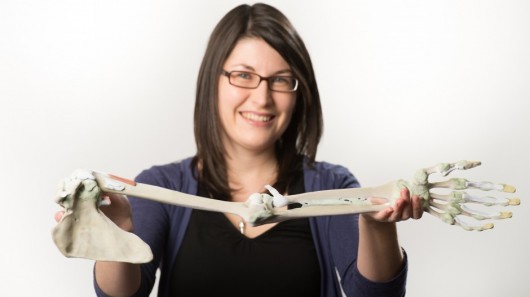
While we might not hear much about a "worldwide shortage of cadavers," the fact is that in developing nations and other places, they are in short supply. It costs money to properly embalm and otherwise prepare the bodies, plus they need to be kept refrigerated, and they can only be dissected under strictly-regulated conditions. A team from Australia's Monash University, however, has developed what could be the next-best thing – highly-realistic 3D-printed cadaver body parts.

While
we might not hear much about a "worldwide shortage of cadavers," the
fact is that in developing nations and other places, they are in short supply.
It costs money to properly embalm and otherwise prepare the bodies, plus they
need to be kept refrigerated, and they can only be dissected under
strictly-regulated conditions. A team from Australia's Monash University,
however, has developed what could be the next-best thing
– highly-realistic 3D-printed cadaver body parts.
The
university's 3D Printed Anatomy Series actually takes the form of a kit that
contains models of all the parts needed to learn the anatomy of the limbs,
chest, abdomen, head and neck. It is believed to be the first
commercially-available resource of its kind.
To
make the models, real body parts are first scanned using either a CT or a
surface laser scanner. The data is used to create a 3D computer model, that is
colored to match the specimen. Using that model, a 3D printer then creates a
high-resolution physical model from either plastic or a "plaster-like
powder."
The
kits can be produced relatively quickly and easily, and should reportedly be
much more cost-effective than real cadavers. They also won't deteriorate nearly
as quickly, won't smell of embalming fluid, and shouldn't present a problem in
countries where religious beliefs forbid such use of bodies.
The
university is currently negotiating with potential commercial partners, and
expects the kit to be available later this year. A paper on its development was
recently published in the journal Anatomical Sciences Education.

 Previous page
Previous page Back to top
Back to top







